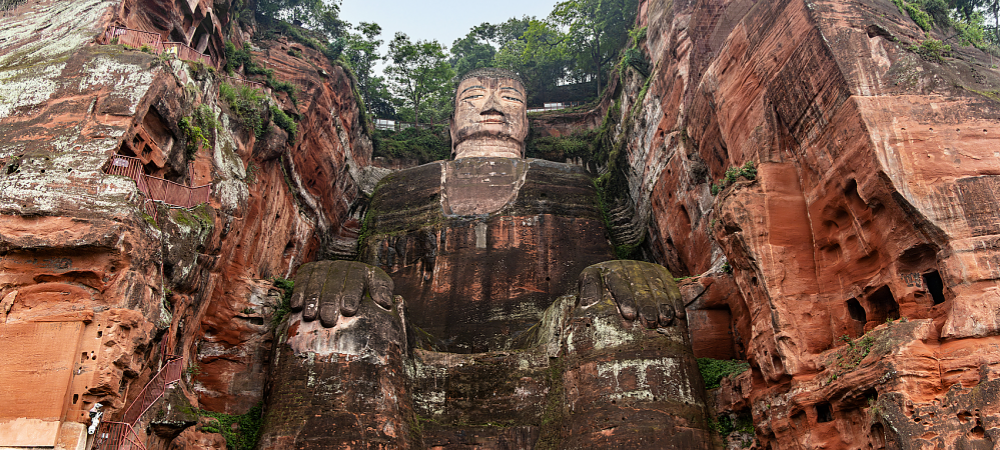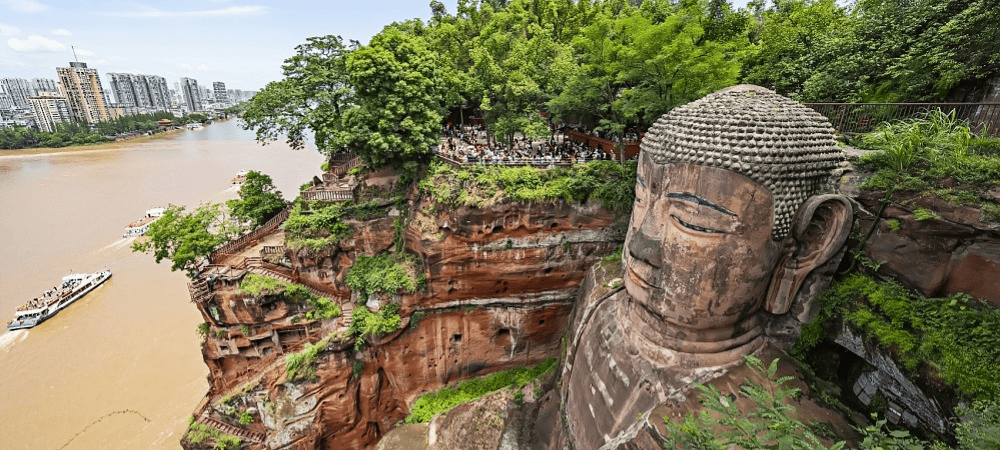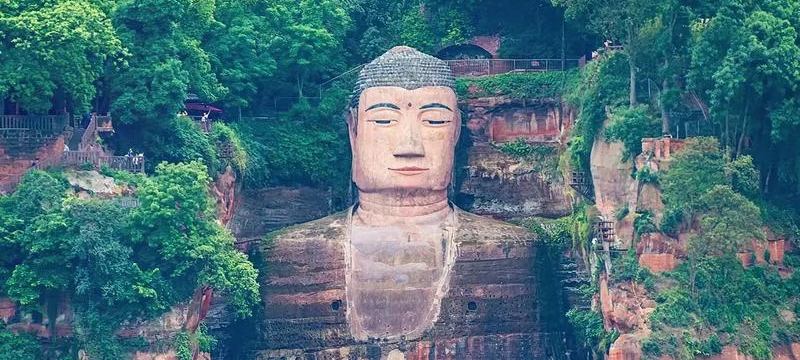





Leshan Giant Buddha
World's tallest stone Buddha (71m), carved into a cliff in Sichuan, China. Built in the 8th century, overlooking three rivers.
1. Attraction Introduction
The Leshan Giant Buddha, a UNESCO World Heritage Site, is the world's tallest stone Buddha statue at 71 meters (233 feet) carved into a cliff at the confluence of the Minjiang, Dadu, and Qingyi rivers. Built during the Tang Dynasty (713-803 CE), this majestic Maitreya Buddha showcases exquisite ancient craftsmanship. The site includes the Wuyou Temple, Lingbao Pagoda, and Mahao Cave Tomb Museum, offering cultural and historical depth beyond the iconic statue.
2. Historical Background
The Leshan Giant Buddha was built during the Tang Dynasty (618–907) and completed in 803 AD, taking around 90 years to complete. The statue stands 71 meters (233 feet) tall, with a head measuring 14.7 meters (48 feet) wide, and it represents Maitreya, the Buddha of the Future.
The Buddha was constructed under the direction of Hai Tong, a Buddhist monk, who was concerned about the dangerous river currents. He believed that building a giant statue would calm the river and protect sailors. The project was funded by local officials, and despite the immense scale of the work, it was an extraordinary feat of ancient engineering.
In 1996, the Leshan Giant Buddha was designated a UNESCO World Heritage Site as part of the Mount Emei Scenic Area. It is regarded not only as a masterpiece of Buddhist art but also as a symbol of harmony between nature, religion, and human creation.
3. Map & Key Spots
Giant Buddha: View from top (head platform) or bottom (foot platform via Nine-Bend Plank Path).
Wuyou Temple: Ancient Buddhist temple with Ming-era statues.
Lingbao Pagoda: 13th-century pagoda offering panoramic river views.
Mahao Cave Tombs: Eastern Han Dynasty (25-220 CE) burial chambers.
Dongpo Tower: Tribute to poet Su Shi (optional nearby attraction).
4. Suggested Route
Half-Day Route:
Enter through North Gate → Wuyou Temple → Giant Buddha Head Platform.
Descend Nine-Bend Plank Path to Buddha’s feet (30-50 mins wait possible).
Boat tour (optional) for full-face view → Exit via East Gate.
Full-Day Route: Add Lingbao Pagoda + Mahao Cave Museum.
5. Best Season / Seasons to Avoid
Best: March-May & September-November (mild weather; clearer views).
Avoid: July-August (peak heat + crowds; river levels may limit boat tours).
6. Transportation Guide
Location: Leshan City, Sichuan Province, China
From Chengdu:
High-Speed Train: Chengdu East → Leshan Station (50 mins, 54RMB), then taxi to scenic area (20 mins, ~30RMB).
Bus: Xinnanmen Station → Leshan (2 hrs, 50RMB).
From Emei: Bus #601 (1 hr, 5RMB) or taxi (~100RMB).
Boat Tours: Depart from Leshan Dock (70RMB, 30-min ride).
7. Ticket Prices & Fees
Entrance: 80RMB (peak season Apr-Oct); 60RMB (off-season).
Boat Tour: 70RMB (best for full Buddha view without climbing).
Optional:
Mahao Cave Museum: 80RMB (combined ticket available).
Audio Guide: 40RMB (English/Chinese).
8. Special Notes
Crowds: Arrive before 9 AM to avoid 2+ hour waits at the plank path.
Accessibility: Plank path has steep stairs; boat tour recommended for mobility-limited visitors.
Luggage Storage: Available at visitor center (5-10RMB).
Closed Areas: Boat tours may cancel due to high water (July-Sept).
Photography: Best light for Buddha’s face is 10 AM-2 PM.
